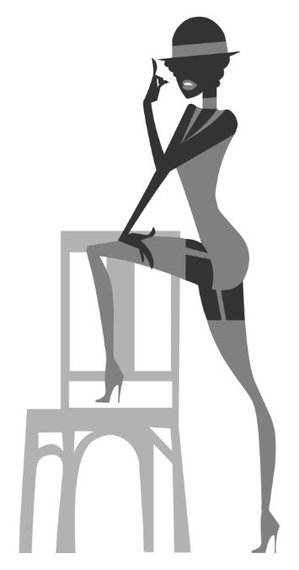Why has User Experience Become a Differentiator? Since the beginning of time, human's natural draw to things that simply just seem to work has been evident and it is common knowledge that beauty and natural appeal have been used to increase people's desire for objects. The same can be said in today's world with User Experience (UX). Did you ever wonder why you just love that certain application on your mobile phone? Or why you keep returning to that certain restaurant?
Since the beginning of time, human's natural draw to things that simply just seem to work has been evident and it is common knowledge that beauty and natural appeal have been used to increase people's desire for objects. The same can be said in today's world with User Experience (UX). Did you ever wonder why you just love that certain application on your mobile phone? Or why you keep returning to that certain restaurant?
The truth is, providing a great experience that works for the user goes far beyond just the user interface (UI) or physical appeal. It is based on a focused and deep understanding of the user, what they are trying to achieve and how you will provide a success to them. It is the harmonious connection between design, product development, cognitive and behavioral science and marketing for adoption.
The word UX is used today time and time again in various forms - User Experience, Experience Design, Customer Experience...the list continues. But why is this domain suddenly erupting? Why is it that UX Designers have seen 22x job growth in the last 5 years?
Actually, design of experiences focused on the user has been around for quite some time. Names such as Jakob Neilson and Donald Norman etc. have paved the way for the discipline since Norman coined the UX Design term in the 90's and User Centered Design (UCD) in his book "the psychology of everyday things" back in 1986. But what has changed to make UX such a booming domain in recent years?
The world changed. That is the simple answer with many complex caveats. At the highest level the pure dynamic of a User and the world they live in changed. The technology that built the foundation of the connected world we live in today was introduced some time ago, be that the telephone, a computer, or the internet. However, we were always tethered, and these technologies were only for those that were privy to it. We were almost always physically restricted by the device we were using. It was always human and telephone for the duration of the conversation, or human joined by a cable to a heavy machine to access the world wide web. The tasks of our lives were simply more linear due to this physical restriction. Now, we live in a hyper connected, mobile world where there is no longer a divide between our digital and physical lives. We can vacuum our house while booking a trip abroad, or talk to our TV while our hands are busy flicking through a book. In fact, 86% of mobile internet users are using their devices while watching TV. We have access to more information and people than ever before.
This untethered world of readily accessible technology has had many side effects that designers now have to consider as a part of creating end-to-end experiences. For example, we have entered a world of interruptions. In fact, the average employee has 56 interruptions a day and spends about 2 hours recovering from distractions daily. Also, with developing countries now having access to mobile and internet, and by now over 1.08 billion of the world's 4 billion phones in use being smart phones, the playground has very clearly changed. In fact, more and more companies are developing products that are competing in the same space, therefore a new differentiator was needed.
 UX became that differentiator, and those companies that understood their user and how to design for them reaped the rewards of market share and profit. So what is Experience Design? It is every aspect of a user's interaction with a product or entity that makes up the users perception as a whole. Not to be confused with usability, which is the ease in which a user can achieve their goals with the product. Experience is understanding the user, their environment and their context from design through to delivering the experience to them. With sensors becoming more and more ubiquitous there is more contextual data than ever before. This puts extreme power and responsibility into the hand of the Experience Designer. How do they use this information to make people more efficient and provide genuinely better ways of doing things, all the while ensuring security and privacy over people and their data? With a connected world and an Internet of Things, security plays a pivotal role as anything connected can be accessed by anyone.
UX became that differentiator, and those companies that understood their user and how to design for them reaped the rewards of market share and profit. So what is Experience Design? It is every aspect of a user's interaction with a product or entity that makes up the users perception as a whole. Not to be confused with usability, which is the ease in which a user can achieve their goals with the product. Experience is understanding the user, their environment and their context from design through to delivering the experience to them. With sensors becoming more and more ubiquitous there is more contextual data than ever before. This puts extreme power and responsibility into the hand of the Experience Designer. How do they use this information to make people more efficient and provide genuinely better ways of doing things, all the while ensuring security and privacy over people and their data? With a connected world and an Internet of Things, security plays a pivotal role as anything connected can be accessed by anyone.
Another byproduct of this world in which there is overwhelming choice and everything is accessible, is overload. We have greater expectations than ever before of services and applications, we feel we have less time than ever to fit everything in, and we are always on or connected to glowing rectangles. Think about it: Your alarm is on your smart phone, it goes off and that screen is the first thing you see. You then spot 20 new notifications and emails from work, life and social media. You obviously have to take a look...then you stumble your way to the coffee machine still squinting from the little glowing rectangle with your phone still in hand. Then you avert your eyes to the TV, then a laptop screen, then maybe some gym time where there is a screen on your elliptical, then wait...wait....oh yes your mobile is still with you buzzing away with every little micro blog and minute of the lives of people you know or do not know. You go home and maybe have a moment to eat, before setting your alarm and reading your tablet in bed....just before your eyes close. Now, this may be extreme ... But reality is not far off. In fact, a study found that the average person switches between devices around 21 times an hour, the average person checks their phone 110 times a day and the average office worker sends or receives an average of 120 emails a day.
The only way you can make your product stand out in this overloaded world, is by providing a great User Experience from the way you create the product, to the way you market it for conversion optimization. It may seem overwhelming, but don't worry there are some really simple things you can start doing right away. You can start by actually looking at your users, observing them and seeing how they interact with your product. You can test new ideas with your target audience and get rapid feedback as you develop. You can look at your end to end experience and see where you can use context to enable an adaptive, personalized experience for your users. You can start innovating by observing, observe how people do things today, and identify the gaps in their experience and the pain points you can solve - after all, much of the time a User may not know what they need until you show it them.
At the end of the day, Experience Design is the glue. How you craft the design and join the dots, understanding all the interactions between user, their devices, context and the environment will ensure that the user can do their task and achieve their goal in the best way possible, and that, will keep them coming back for more.
